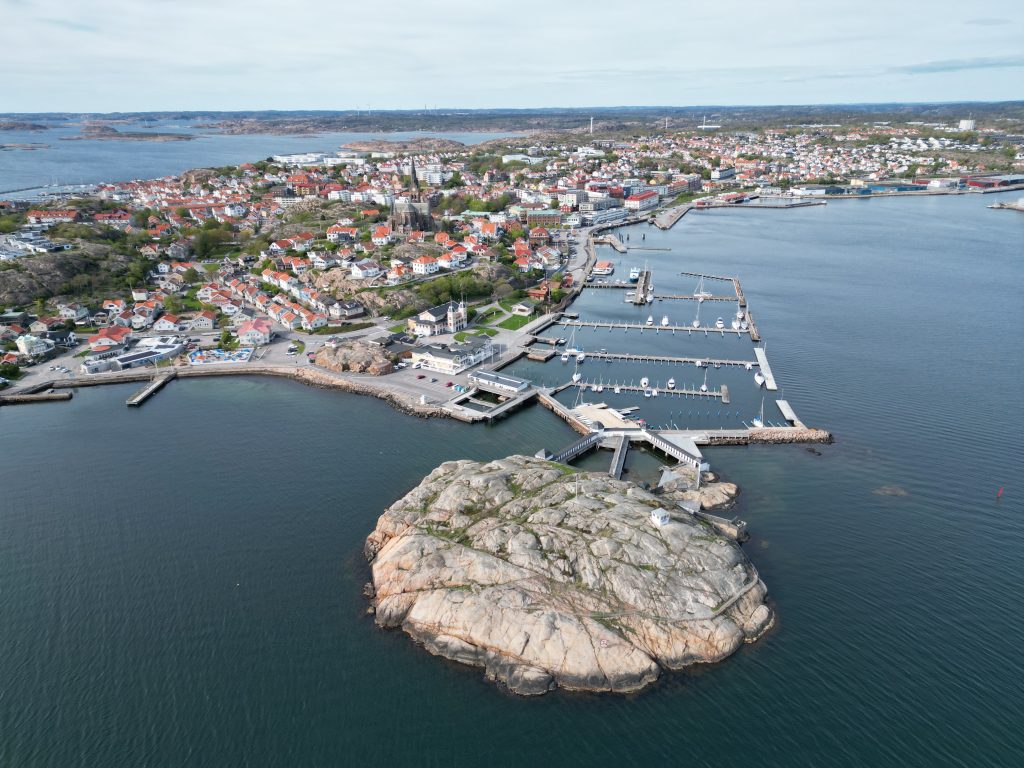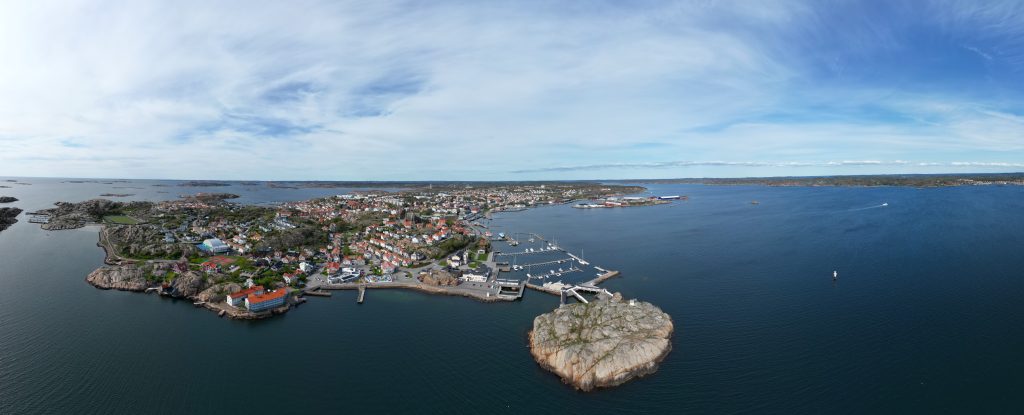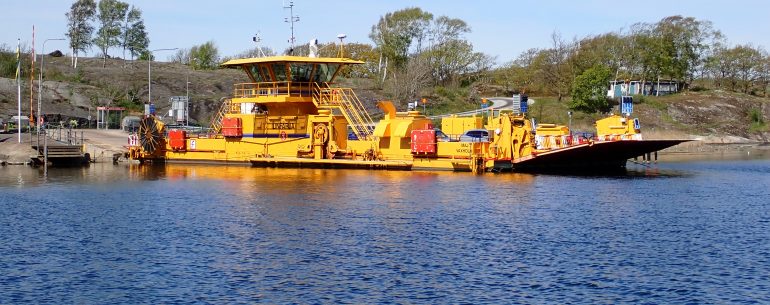First thing this morning was taken up with various jobs. While we still had the car (until Vindö Marin put it back in one of their boat sheds again!), we did a quick shop in the ICA at Henån. We then did a final check with the Charmary delivery crew and once they seemed happy, we headed off. It was very calm at first, so for a couple of hours we motored back through and past Ellös. Once at Gullholmen the breeze filled in and we hoisted main and staysail and had a lovely sail, on the wind, right up to Lysekil, only taking the sails down as we drew level with the gästhamn. We chose the harbour on the east side of the peninsula – the Havsbadets harbour. This is the largest gästhamn with around 200 spaces – some alongside, some mooring lines and some y-booms.
The rest of the afternoon was spent making the most of the facilities we have – in particular showers and washing machines – the first time we have had access to these for quite a while. This will presumably be a relief to many in Sweden and perhaps lead to us being shunned less in public as we walk around.

Lysekil itself is on the the Stångenäs peninsula with harbours on the east and the west side and has an illustrious history. It dates back to a first mention in 1570 and was originally part of an estate belonging to Lyse farm – hence the name. It quickly though was drawn to making a living from the sea and not always strictly reputably. In the time before fixed lighthouses they would light false beacons drawing ships onto the rocks (of which there is no shortage round here!). They would then pillage the ships and kill any sailors who resisted them. This presumably helped them built a useful skill set for the Great Northern War (1700-21). In this time the town was one of the harbours where privateering was sanctioned by the government. This was done through ‘letters of marque‘ – lending the activity a legality that was perhaps questionable. The main reason was that Charles XII of Sweden needed ships and men for the navy, so he allowed privateers to capture them and incentivised them with a share of the loot.

In later years the town became a centre for the herring industry exporting salted herring and the interestingly named train oil. Contrary to expectation, this is actually whale oil, but it is oil that specifically comes from the bowhead whale. The name ‘train-oil’ comes from the Dutch word ‘traan‘ meaning tear-drop. This really seems quite apt – at least from the perspective of the bowhead whale.
From train-oil and salted herring the town moved on to becoming a spa and bath town in the second half of the 19th century. Thanks to the influence of the resident physician, Carl Curman, Lysekil became a resort favoured by the Stockholm socialites. This continued into the early 20th century.
However, Lysekil’s true claim to fame arises from an incident in 1961. This incident, in true Swedish fashion involved a Volvo, and is thought to be completely unique, something that has never happened since and is perhaps unlikely to ever happen again. The incident was ….. a collision between a car and a submarine! Lysekil harbour is on quite a slope and this was probably the main contributory factor in the collision. A Volvo PV544 car was parked by the telephone exchange building at Fiskaregatan but the owner didn’t realise that the car park was on a slope, so decided not to put the handbrake on. The inevitable influence of gravity led to the car heading off on its own, appropriately careering past a shipment of salted herring, but rather than landing in the harbour, there was a submarine conveniently moored in the way. Despite being a Volvo, the front of the car was re-arranged significantly, but the submarine just had a dented rail.

